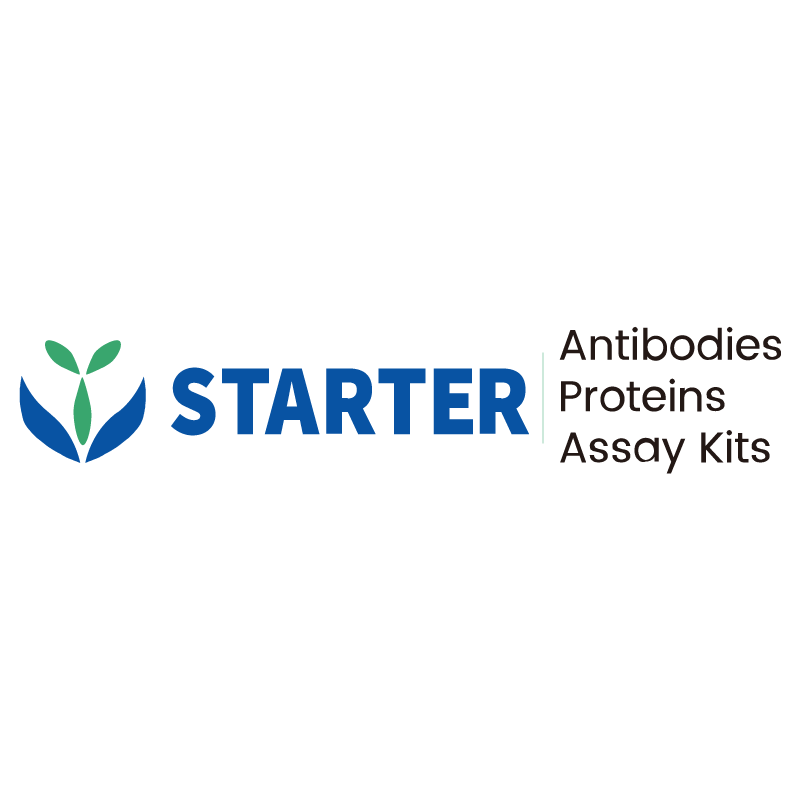WB result of active YAP1 Recombinant Rabbit mAb
Primary antibody: active YAP1 Recombinant Rabbit mAb at 1/1000 dilution
Lane 1: HeLa treated with 100ng/ml Calyculin A for 30 minutes whole cell lysate 20 µg
Lane 2: HeLa treated with 100ng/ml Calyculin A for 30 minutes whole cell lysate 20 µg, then
the membrane was treated with Alkaline Phosphatase for l hour
Secondary antibody: Goat Anti-rabbit IgG, (H+L), HRP conjugated at 1/10000 dilution
Predicted MW: 54 kDa
Observed MW: 85 kDa
Product Details
Product Details
Product Specification
| Host | Rabbit |
| Synonyms | Transcriptional coactivator YAP1; Yes-associated protein 1; Protein yorkie homolog; Yes-associated protein YAP65 homolog; YAP65 |
| Location | Cytoplasm, Nucleus |
| Accession | P46937 |
| Clone Number | S-3261 |
| Antibody Type | Recombinant mAb |
| Isotype | IgG |
| Application | WB, IHC-P, ICC |
| Reactivity | Hu, Ms, Rt |
| Positive Sample | HUVEC |
| Purification | Protein A |
| Concentration | 0.5 mg/ml |
| Conjugation | Unconjugated |
| Physical Appearance | Liquid |
| Storage Buffer | PBS, 40% Glycerol, 0.05% BSA, 0.03% Proclin 300 |
| Stability & Storage | 12 months from date of receipt / reconstitution, -20 °C as supplied |
Dilution
| application | dilution | species |
| WB | 1:1000 | Hu, Ms |
| IHC-P | 1:500 | Hu, Ms, Rt |
| ICC | 1:500 | Hu |
Background
YAP1, also known as YAP (Yes-Associated Protein) or WWTR1 (WW Domain Containing Transcription Regulator 1), is a transcriptional co-activator that plays a pivotal role in the Hippo signaling pathway. When YAP1 is in an active state (commonly referred to as active YAP1), it enters the nucleus and binds to transcription factors called TEADs (TEA Domain Family Members). This YAP-TEAD complex then promotes the expression of a series of genes associated with cell proliferation, survival, and migration. However, when the Hippo signaling pathway is activated, the activity of YAP1 is suppressed. This often involves the phosphorylation of YAP1, which leads to its binding with 14-3-3 proteins and retention in the cytoplasm, preventing it from entering the nucleus to activate transcription. Abnormal expression or dysfunction of active YAP1 has been linked to various diseases, including cancer, heart disease, and neurological disorders. Therefore, studying the regulatory mechanisms of YAP1 activity and its role in diseases is crucial for developing new therapeutic strategies.
Picture
Picture
Western Blot
WB result of active YAP1 Recombinant Rabbit mAb
Primary antibody: active YAP1 Recombinant Rabbit mAb at 1/1000 dilution
Lane 1: NIH/3T3 treated with 100ng/ml Calyculin A for 30 minutes whole cell lysate 20 µg
Lane 2: NIH/3T3 treated with 100ng/ml Calyculin A for 30 minutes whole cell lysate 20 µg, then the membrane was treated with Alkaline Phosphatase for l hour
Secondary antibody: Goat Anti-rabbit IgG, (H+L), HRP conjugated at 1/10000 dilution
Predicted MW: 75 kDa
Observed MW: 80 kDa
Immunohistochemistry
IHC shows positive staining in paraffin-embedded human cerebral cortex. Anti-active YAP1 antibody was used at 1/500 dilution, followed by a HRP Polymer for Mouse & Rabbit IgG (ready to use). Counterstained with hematoxylin. Heat mediated antigen retrieval with Tris/EDTA buffer pH9.0 was performed before commencing with IHC staining protocol.
IHC shows positive staining in paraffin-embedded human testis. Anti-active YAP1 antibody was used at 1/500 dilution, followed by a HRP Polymer for Mouse & Rabbit IgG (ready to use). Counterstained with hematoxylin. Heat mediated antigen retrieval with Tris/EDTA buffer pH9.0 was performed before commencing with IHC staining protocol.
IHC shows positive staining in paraffin-embedded human ovarian cancer. Anti-active YAP1 antibody was used at 1/500 dilution, followed by a HRP Polymer for Mouse & Rabbit IgG (ready to use). Counterstained with hematoxylin. Heat mediated antigen retrieval with Tris/EDTA buffer pH9.0 was performed before commencing with IHC staining protocol.
IHC shows positive staining in paraffin-embedded human pancreatic cancer. Anti-active YAP1 antibody was used at 1/500 dilution, followed by a HRP Polymer for Mouse & Rabbit IgG (ready to use). Counterstained with hematoxylin. Heat mediated antigen retrieval with Tris/EDTA buffer pH9.0 was performed before commencing with IHC staining protocol.
IHC shows positive staining in paraffin-embedded mouse testis. Anti-active YAP1 antibody was used at 1/500 dilution, followed by a HRP Polymer for Mouse & Rabbit IgG (ready to use). Counterstained with hematoxylin. Heat mediated antigen retrieval with Tris/EDTA buffer pH9.0 was performed before commencing with IHC staining protocol.
IHC shows positive staining in paraffin-embedded rat testis. Anti-active YAP1 antibody was used at 1/500 dilution, followed by a HRP Polymer for Mouse & Rabbit IgG (ready to use). Counterstained with hematoxylin. Heat mediated antigen retrieval with Tris/EDTA buffer pH9.0 was performed before commencing with IHC staining protocol.
Immunocytochemistry
ICC shows positive staining in HUVEC cells. Anti-active YAP1 antibody was used at 1/500 dilution (Green) and incubated overnight at 4°C. Goat polyclonal Antibody to Rabbit IgG - H&L (Alexa Fluor® 488) was used as secondary antibody at 1/1000 dilution. The cells were fixed with 4% PFA and permeabilized with 0.1% PBS-Triton X-100. Nuclei were counterstained with DAPI (Blue). Counterstain with tubulin (Red).


